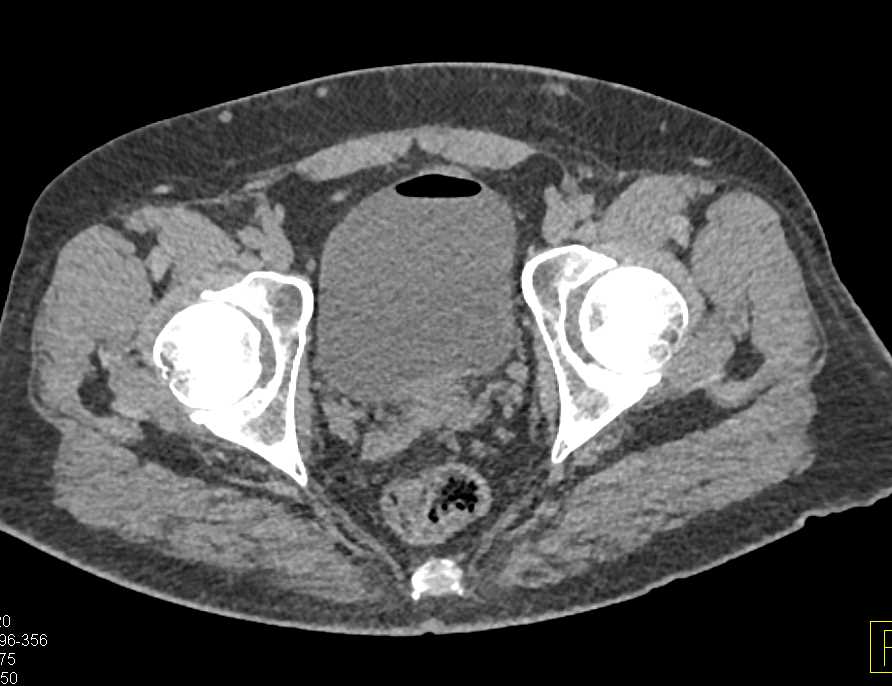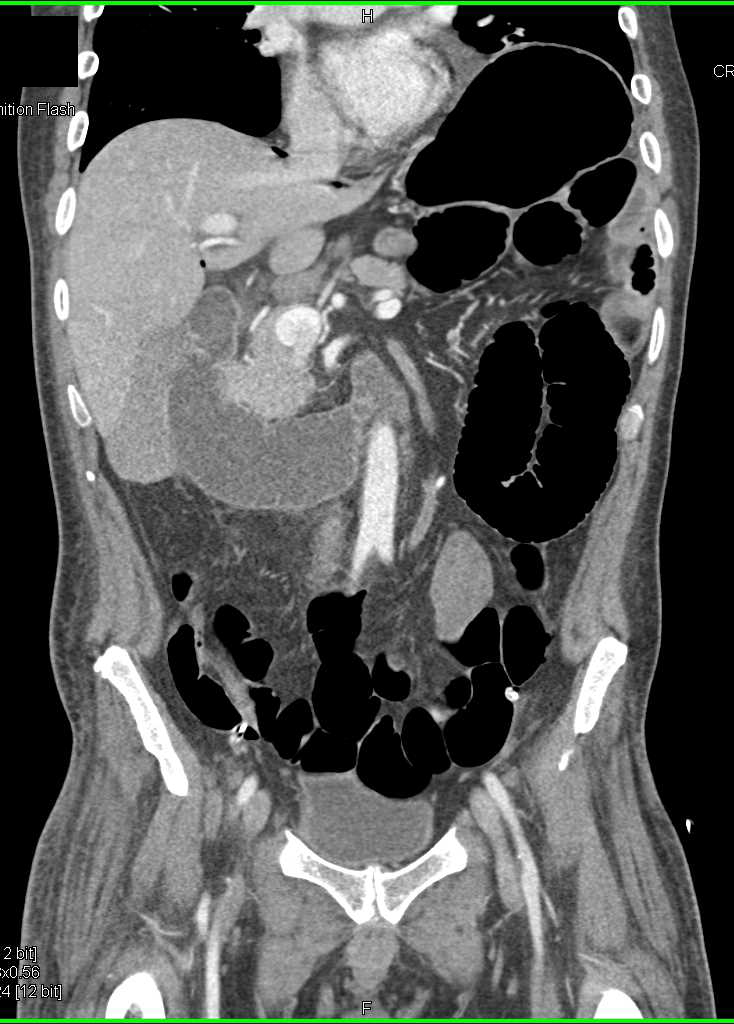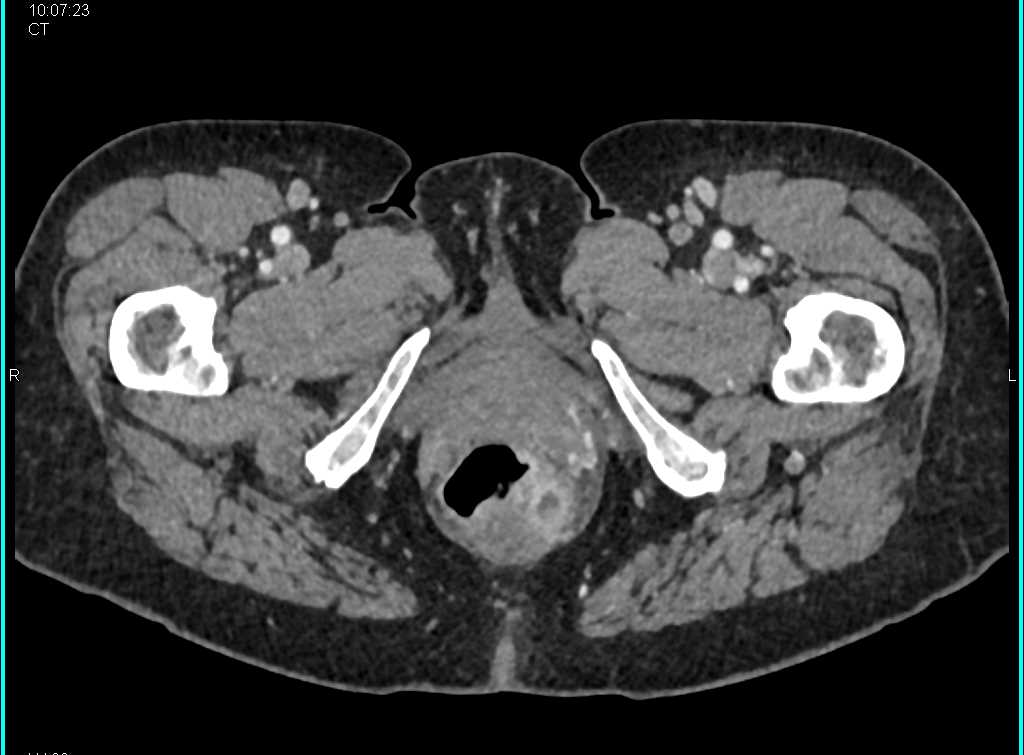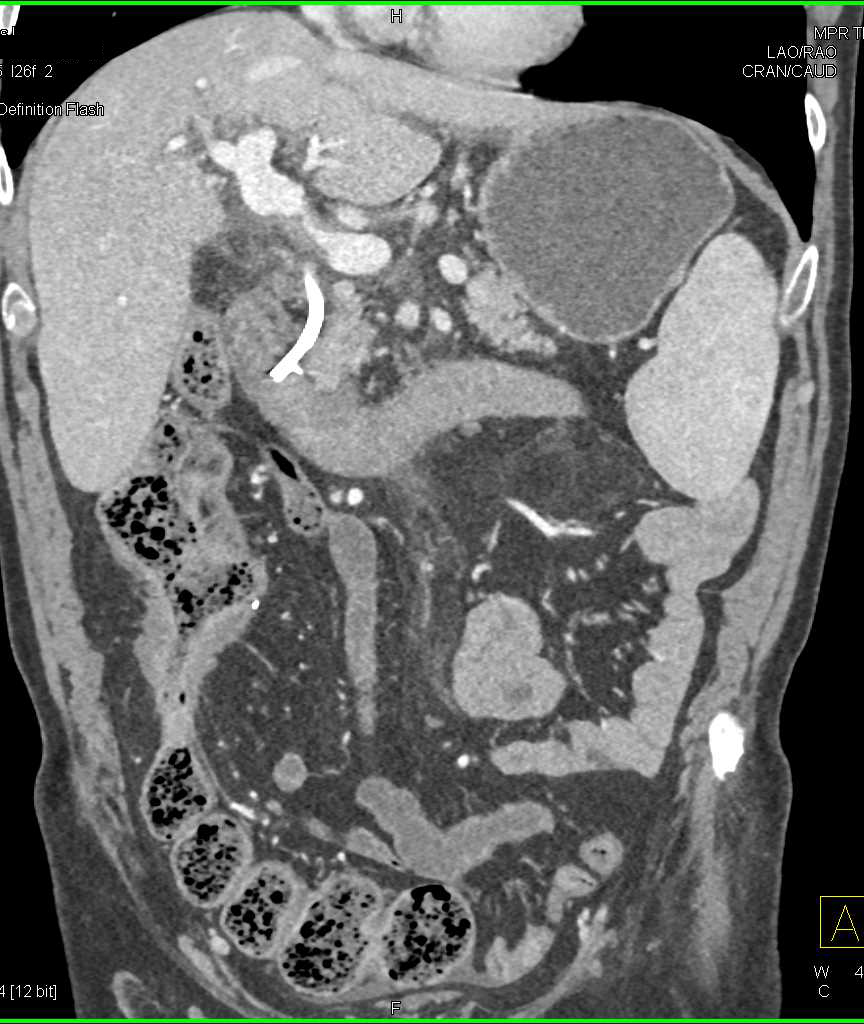
- 1
- 0
- ,
- 5
- 4
- 0
To Quiz Yourself: Select OFF by clicking the button to hide the diagnosis & additional resources under the case.
Quick Browser: Select ON by clicking the button to hide the additional resources for faster case review.
CASE NUMBER
1,410
Diagnosis
Colovesical Fistulae
Note
When you see air in the bladder like this case, you need to first find out, has the patient been recently cathed? If they had it in recently, that would explain the air. But if there’s air in the bladder and there’s been no procedure, then you have to have a fistula. You can have infectious of the kidneys like emphysematous pyelonephritis which extends downwards. You can have emphysematous cystitis, but one of the most common things you get is a fistula.
You can see in this case there’s thickening of the anterior portion of the bladder, the prostate is enlarged. The number one cause of fistulae to the bladder besides trauma or androgenic would be diverticulitis. When you have diverticulitis, it typically involves the left side of the bladder and the anterior wall. And what you want to do to really detect the presence of fistulae is give rectal contrast – that’s a good way of doing it – or you could do the CT cystogram and have the contrast reflux upward into the bowel. The best way, probably, is with rectal contrast.
And here’s just a nice example showing you the fistulae’s track from under the patient’s sigmoid colon to the bladder. These patients will need surgery and, even in the best of hands, this has high morbidity and high mortality. So colovesical fistulae due to diverticular disease.
Again, trauma – things that are on the right side are typically due to Crohn’s disease; left side, diverticular disease. Just a really nice example showing you the fistulae’s track from the sigmoid to the bladder right at the dome. Very very classic appearance.
You can see in this case there’s thickening of the anterior portion of the bladder, the prostate is enlarged. The number one cause of fistulae to the bladder besides trauma or androgenic would be diverticulitis. When you have diverticulitis, it typically involves the left side of the bladder and the anterior wall. And what you want to do to really detect the presence of fistulae is give rectal contrast – that’s a good way of doing it – or you could do the CT cystogram and have the contrast reflux upward into the bowel. The best way, probably, is with rectal contrast.
And here’s just a nice example showing you the fistulae’s track from under the patient’s sigmoid colon to the bladder. These patients will need surgery and, even in the best of hands, this has high morbidity and high mortality. So colovesical fistulae due to diverticular disease.
Again, trauma – things that are on the right side are typically due to Crohn’s disease; left side, diverticular disease. Just a really nice example showing you the fistulae’s track from the sigmoid to the bladder right at the dome. Very very classic appearance.
THIS IS CASE
1,410
OF
1,579






















